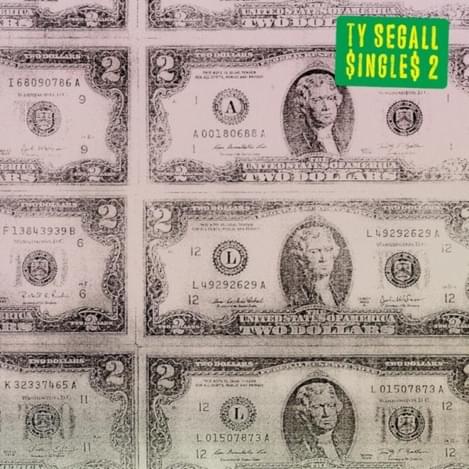Ty Segall - $ingle$ 2
"$ingle$ 2"

After all, the man is clearly not one to cold-footedly hold back material as some artists might: honing songs for years on end in hopes of piecing together that once-in-a-decade hit-factory record. Rather, when Segall has a good idea, he gets it out there in its purest form—a crucial move for any lo-fi recording. To that effect, $ingle$ 2 (which follows 2010's limited edition, cassette-only $ingles comp) never feels like some hapless assembly of Segall's left-by-the-wayside tracks, but rather an assortment of old touring faves given new life. It's as though he were thumbing through old notebooks and thought "Oh, shit—I knew I'd left 'Children of Paul' somewhere," and rushed these forgotten relics of limited pressings onto a viable format—then peppered in a couple crowd-pleasing proto-punk covers for good measure.
In fact, listening to $ingle$ 2 is somewhat like watching one of those viral time-lapse videos (where the subject takes a daily selfie over X years and shows them in quick succession). Throughout the record, Segall's past five years are heard in rapid exposure, and one can trace his subtle shift from more caustic jam sessions to his modern lean on hook-heavier and (comparatively) mellower tunes. This is particularly evident in tracks recorded between 2011 and 2012, and one need look no further than "Hand Glams" to hear said change. The comp's only song to also appear on a studio album (2012's Twins), the $ingle$ version—recorded one year prior—is significantly weightier, relying heavily on a forceful bass (versus the studio version's focus on a pacing guitar line). Similar lines can be drawn between "Spider" (2011) and "Mother Lemonade" (2012), or "Children of Paul" (2011) and "Fucked Up Mother Fucker" (2012).
Now, there's no going forward without mentioning Segall's complete retooling of the Velvet Underground & Nico classic "Femme Fatale," which he's re-envisioned as an aggressive, garage-punk stomper inlaid with screeching guitars and hum-heavy vocals that, while layered to sound completely disembodied from any human figure, retain an electric vibrancy. There's a rather "meta" beauty in this transformation, as he's taken a veritable icon of art rock history and transmuted it to fit the modern formats of the very genres that, today, perhaps draw most heavily from it. The covers are sort of the black sheep of $ingle$ 2—providing momentary distraction from the comp's 2010–2013 time-capsule status—yet Ty's modernization of the Velvets' sound illustrates his musical understanding in ways otherwise unseen.
At the end of the day, to be a true Ty Segall fan is to keep a voracious appetite for his ceaseless output. There's no proper gateway to fandom or "high water mark" albums to rely on—just a constant stream of garage-y goodness. $ingle$ 2 acts as a highlights reel for the past five years, and its subtle shifts leave it feeling less like a compilation and more like an album on shuffle—and really, what more could one ask of a b-sides collection?
Get the Best Fit take on the week in music direct to your inbox every Friday








